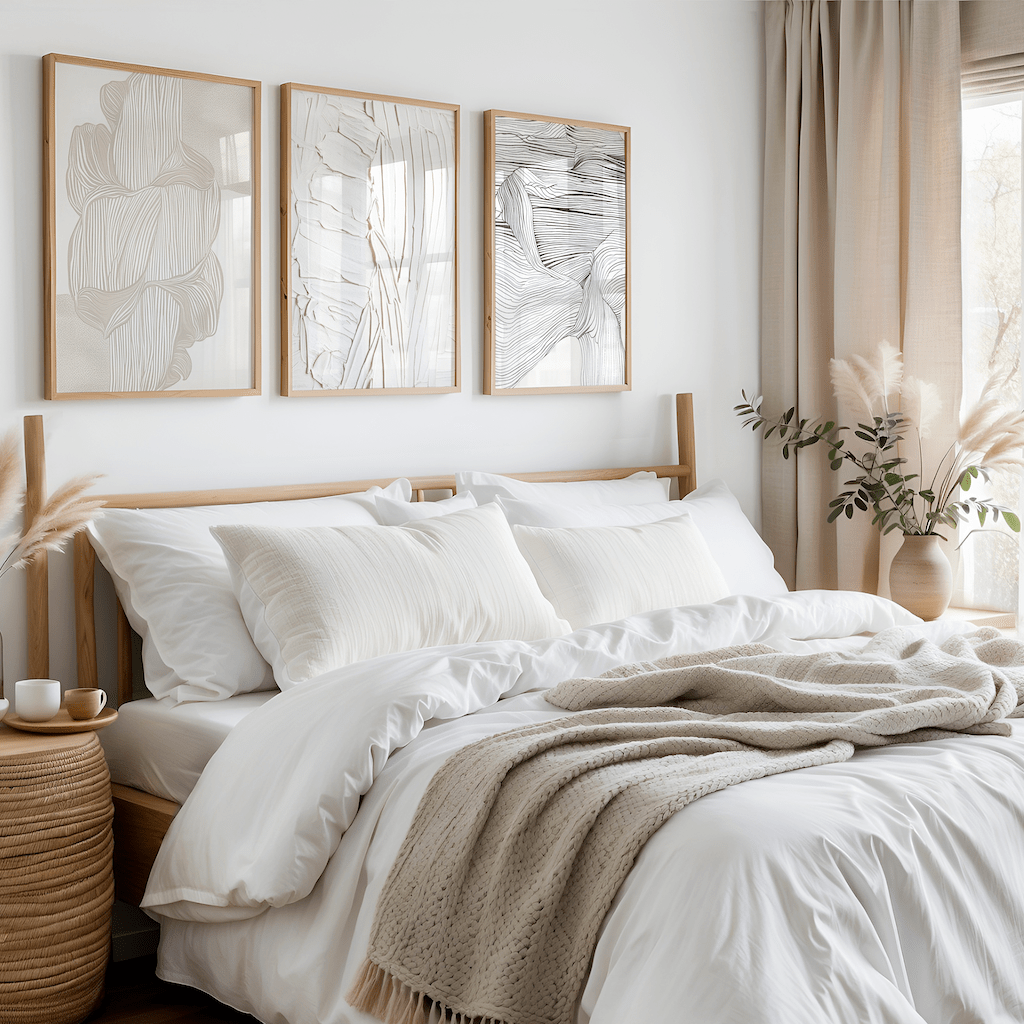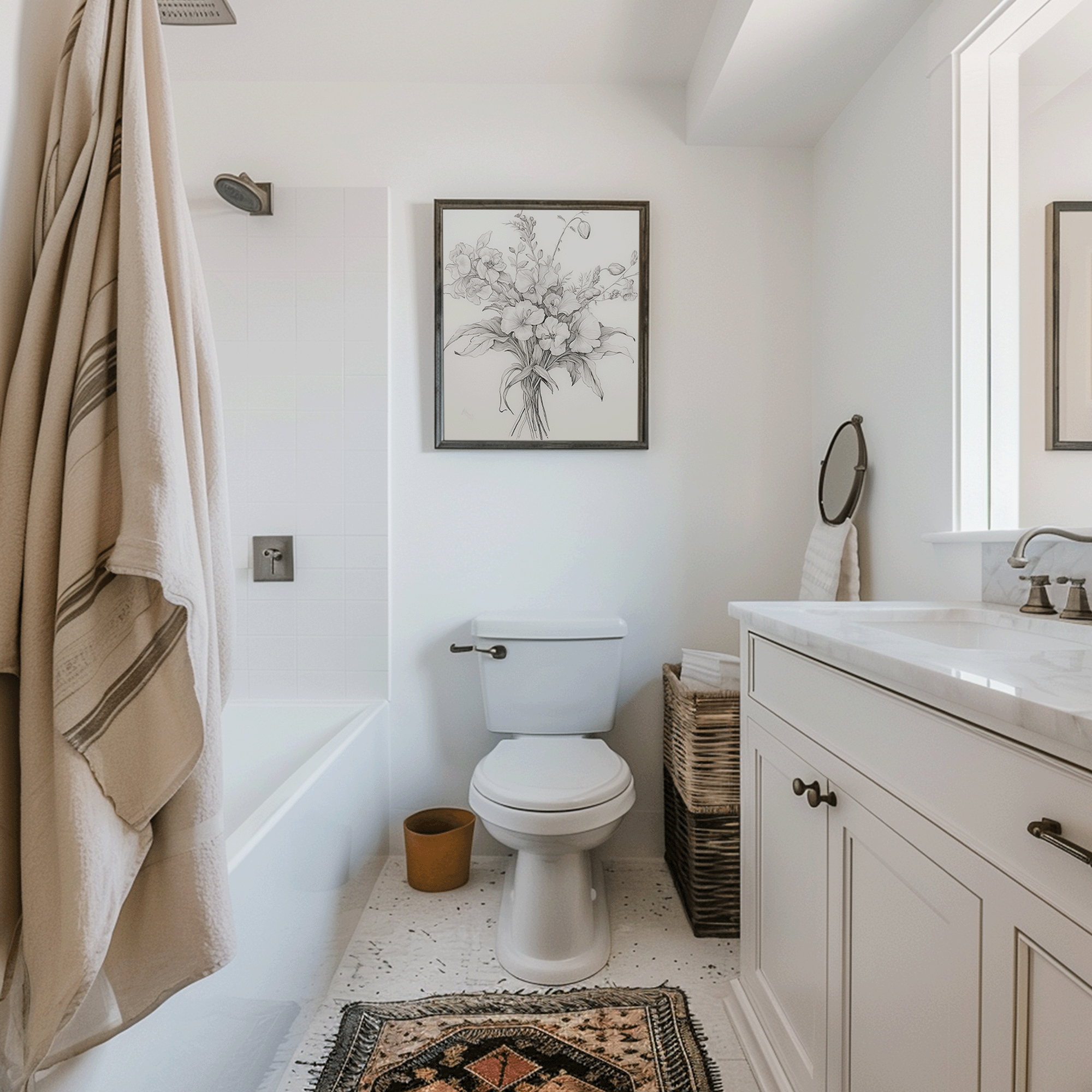As we embark on the quest for the perfect canvas for our walls, one crucial aspect that's often overlooked is its depth. The canvas thickness, particularly the 0.75" wrapped canvas, not only impacts the appearance but also affects its durability and overall quality.
Understanding the nuances of thickness is paramount for consumers seeking to elevate their home decor with canvas wall art. From the weight of large canvases to the debate between thick and thin options, let’s discuss the intricacies and discover the ideal thickness for your canvas masterpiece.

How Heavy is a Large Canvas?
The weight of a large canvas is a significant consideration for consumers, particularly when it comes to handling and installation. According to a survey by Artwork Archive, 43% of respondents cited weight as a primary concern when purchasing large canvas art for their homes.
A thicker canvas typically weighs more than a thinner canvas due to the additional material used in its construction. For instance, a standard 36x48" canvas with a thickness of 1.5" can weigh anywhere between five (5) to ten (10) pounds, depending on the materials used and the stretcher bar’s density.
While the weight of a large canvas may present logistical challenges during installation, it often translates to a sturdier and more substantial presence on the wall. As a lightweight alternative, a canvas board, which is a thin, lightweight wood board wrapped with thin canvas, can be considered.
All wall art found here is built solid and comes ready to hang on your wall, allowing an effortless installation.

Is a Thick or Thin Canvas Better?
The debate between thick and thin canvases continues, with proponents on both sides advocating for their preferred option. A thick canvas, typically measuring 1.5" or more in depth, offers several advantages, including enhanced structural integrity, resistance to warping, and a visually striking appearance.
The advent of acrylic paint has increased the popularity and use of cotton duck canvas, as it can be sealed with acrylic polymer to prevent oil penetration and stiffen the fabric. The depth of a thick canvas adds dimension to the artwork, creating a sense of depth and presence that commands attention.
Additionally, thicker canvases provide ample space for gallery wrapping, allowing the artwork to extend seamlessly around the edges without compromising the composition. Art gallery designers often use 1.5" wrapped canvas to give a high definition and a pop-up effect to artwork displayed in galleries.

Conversely, thin canvases, usually around 0.75" in depth, offer a more streamlined and minimalist aesthetic. They are lightweight and easy to handle, making them ideal for smaller spaces or temporary installations.
However, thin canvases may lack the visual impact and durability of their thicker counterparts, especially when displayed in larger sizes or high-traffic areas. The thickness of the wrap canvas affects the display of the image on the wall, its portability, and its ability to give a 'pop-up' effect to the artwork.
What is the Best Thickness for Canvas Art?
Determining the best thickness for a canvas ultimately depends on individual preferences, artistic considerations, and practical requirements. For consumers seeking a bold and substantial presence on their walls, a thicker canvas with a depth of 1.5" or more is an excellent choice.
Not only does it offer enhanced durability and structural integrity, but it also provides ample space for gallery-wrapping, ensuring a seamless and professional finish. Cotton canvas, known for its texture and absorption, is a popular choice for artists due to its affordability and ease of use.

Thicker canvases are particularly well-suited for large-scale artworks or statement pieces intended to serve as focal points in a room. Linen canvas, with its strength and smoothness, is especially suitable for large-scale artworks, providing a high-quality surface that holds tight on stretcher bars. On the other hand, those with limited wall space or a preference for a minimalist aesthetic may opt for a thinner canvas measuring 0.75" in depth.
While thinner canvases may lack the visual impact of their thicker counterparts, they offer versatility and ease of handling, making them suitable for a wide range of spaces and applications. Stretched canvas provides a professional finish and is ideal for artists seeking a ready-to-use surface.

Frequently Asked Questions
Is 400 GSM canvas good?
An image printed on 400gsm canvas is high quality. All canvas prints of 120g or less will have poor printing results and the image will not have clear or crisp detail.
What is the average weight of a canvas?
Pre-stretched, pre-primed canvases will meet almost all professional standards. The lighter version is about 4oz (175g) and heavier, while medium weight canvases are approximately 7 oz (20 g) and heavyweight canvases weigh about 10 ounces.
What weight canvas for large paintings?
Heavyweight canvas (14-20 lbs) has excellent performance and stability. This fabric can resist stretching and are more stable when folded than lighter fabrics.
What is the best thickness for canvas prints?
Large canvas prints can significantly impact the display of art in various settings. Generally, canvas art that is 0.7" wide works well with the interior of homes. A thicker canvas of usually 1.5" would enhance an artwork's perceived value and ensure better visibility.
What is a good quality cotton duck canvas?
Most experts agree that linen is the most reliable and strong product. The thinner weave gives it an easier surface for larger works, while cotton will deform the paint as it is stretched.
Linen canvases come in various qualities, including smooth finishes, finer stitches, and different brands. They are known for their strength compared to cotton, and their weave weight and texture make them suitable for techniques like oil painting, portraiture, and watercolour/inks.
What is the best weight canvas for oil painting?
Medium-heavy canvas (10-12 oz) is robust and is densely weaved, which supports heavier painting applications and prevents primer from passing through pores of the surface. This weight is also ideal for oil painting, as it provides a smooth surface suitable for the application of oil paint.
Conclusion
In the world of canvas wall art, the question of thickness remains a crucial consideration for consumers seeking to elevate their home decor. Whether opting for a bold and substantial presence with a thick canvas or embracing a minimalist aesthetic with a thinner counterpart, the choice ultimately depends on individual preferences and practical requirements.
At Buy Wall Art, we understand the importance of finding the perfect thickness for your canvas masterpiece. With a diverse range of options crafted with precision and care, we empower consumers to create stunning displays that reflect their unique style and personality. Embrace the transformative power of canvas art—where thickness meets excellence and beauty knows no bounds.


















































